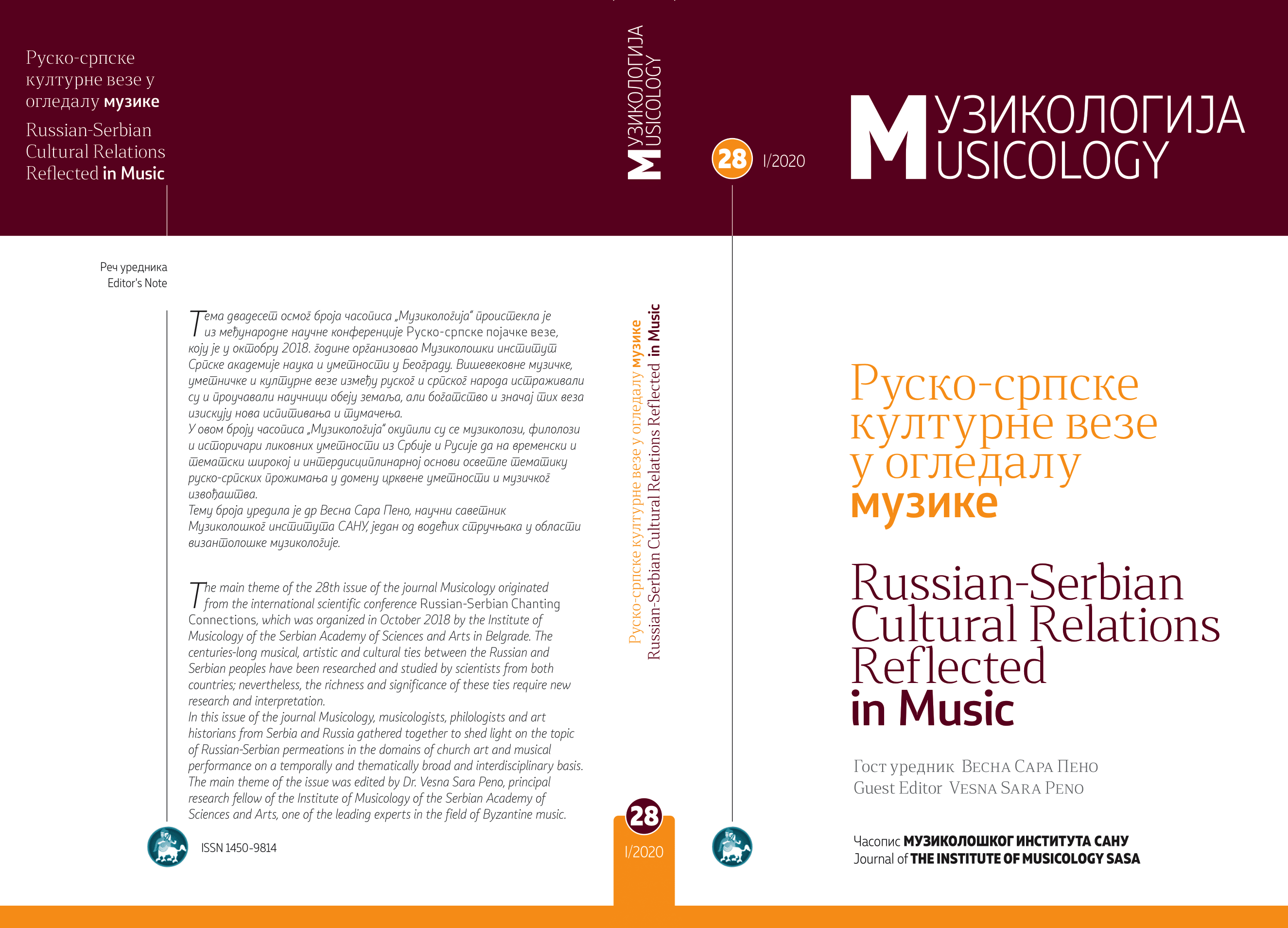William Byrd and the Limits of Formal Music Analysis
Вилијам Берд и ограничења формалне анализе музике
Keywords:
William Byrd, music analysis, Joseph Kerman, Catholic Renaissance music, motet, Anglican Reformation, Elizabethan EnglandAbstract
Writing in 1962, Joseph Kerman was the first to speculate about potentially subversive political meanings in the Cantiones sacrae of the English Renaissance composer William Byrd, his two collections of motets published in 1589 and 1591, “voicing prayers, exhortations, and protests on behalf of the English Catholic community”. Subsequent research has corroborated Kerman’s speculations, showing that many of the texts Byrd set indeed feature the same politically charged metaphors that English Jesuit missionaries used to describe the predicament of Catholics living under the Protestant regime of Queen Elizabeth I, as well as that Byrd maintained close ties with many of these missionaries. In our own time, however, those who have analysed these motets, including Kerman, have paid little attention to this, preferring formal(ist) analytical approaches to this body of music. Focusing on Ne irascaris Domine, one of Byrd’s most famous “political” motets, and the only two major analytical responses to it, this article attempts to demonstrate the limitations of formalist music analysis when applied to Renaissance sacred music.
References
Andrews, Herbert Kennedy (1966) The Technique of Byrd’s Vocal Polyphony, Oxford: Oxford University Press.
Brett, Philip (2007) William Byrd and His Contemporaries: Essays and a Monograph, Berkeley & London: University of California Press.
Everist, Mark (1992) Models of Musical Analysis: Music before 1600, Oxford: Blackwell.
Harley, John (2010) The World of William Byrd: Musicians, Merchants and Magnates, Farnham: Ashgate.
Kerman, Joseph (1962) “The Elizabethan Motet: A Study of Texts for Music”, Studies in the Renaissance 9: 273–308.
Kerman, Joseph (1981) The Masses and Motets of William Byrd, London: Faber.
Kerman, Joseph (1994) “How We Got into Analysis and How to Get Out”. In Write All These Down: Essays on Music, Berkeley and London: University of California Press, 12–33.
Kerman, Joseph (2001) “Byrd, William”. In Stanley Sadie (ed.) The New Grove Dictionary of Music and Musicians, Vol. 4, London: Macmillan, 714–731.
Monson, Craig (1997) “Byrd, the Catholics and the Motet: The Hearing Reopened”. In Dolores Pesce (ed.) Hearing the Motet: Essays on the Motet of the Middle Ages and the Renaissance, New York and Oxford: Oxford University Press, 348–374.
Downloads
Published
Issue
Section
License
Copyright (c) 2020 MUZIKOLOGIJA-MUSICOLOGY

This work is licensed under a Creative Commons Attribution-NonCommercial-NoDerivatives 3.0 Unported License.
You are free to:
- Share — copy and redistribute the material in any medium or format.
The licensor cannot revoke these freedoms as long as you follow the license terms.
Under the following terms:
-
Ауторство — You must give appropriate credit, provide a link to the license, and indicate if changes were made.
You may do so in any reasonable manner, but not in any way that suggests the licensor endorses you or your use. -
Некомерцијално — You may not use the material for commercial purposes.
-
NoDerivatives — If you remix, transform, or build upon the material, you may not distribute the modified material.
- No additional restrictions — You may not apply legal terms or technological measures that legally restrict others from doing anything the license permits.



